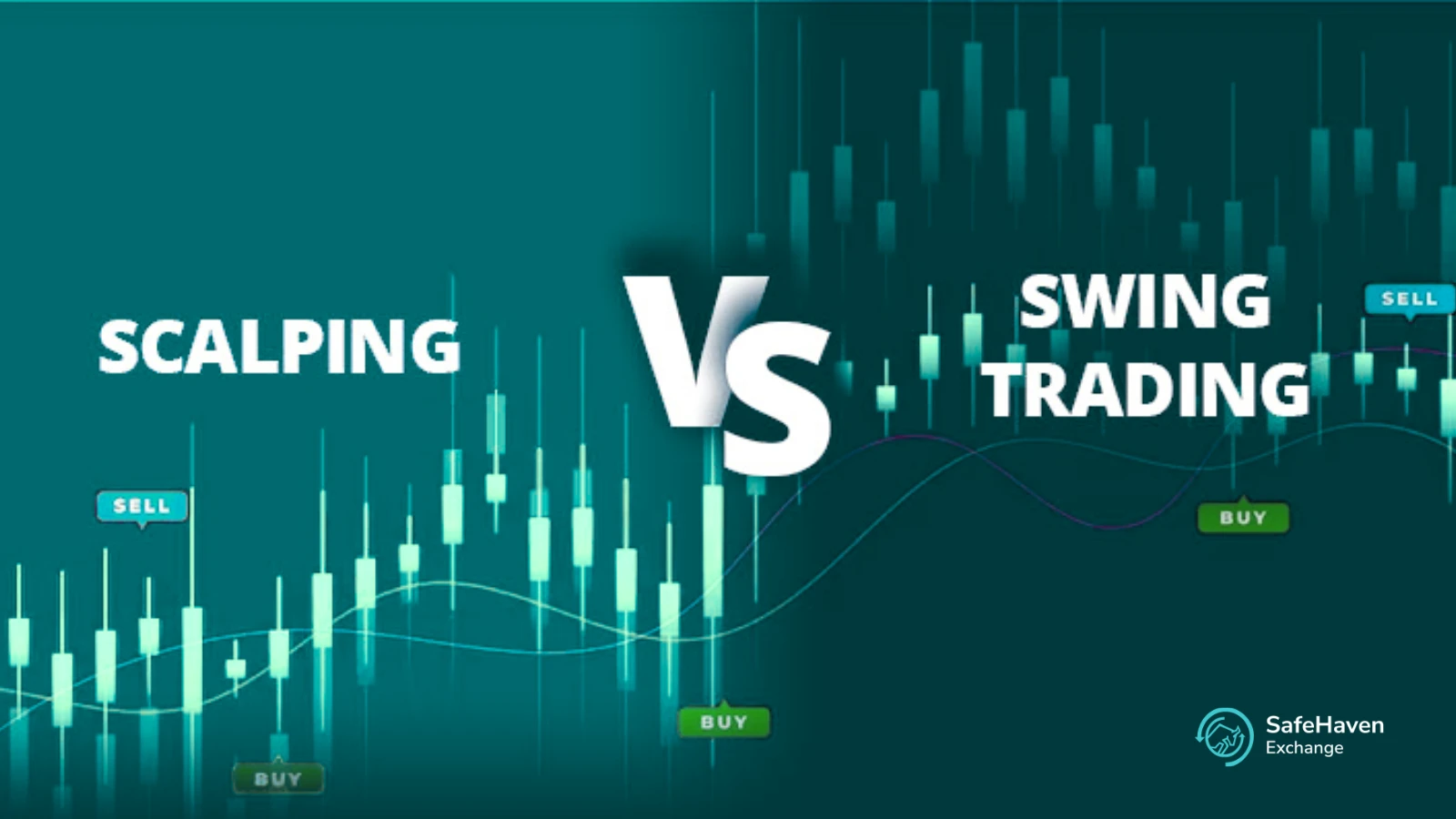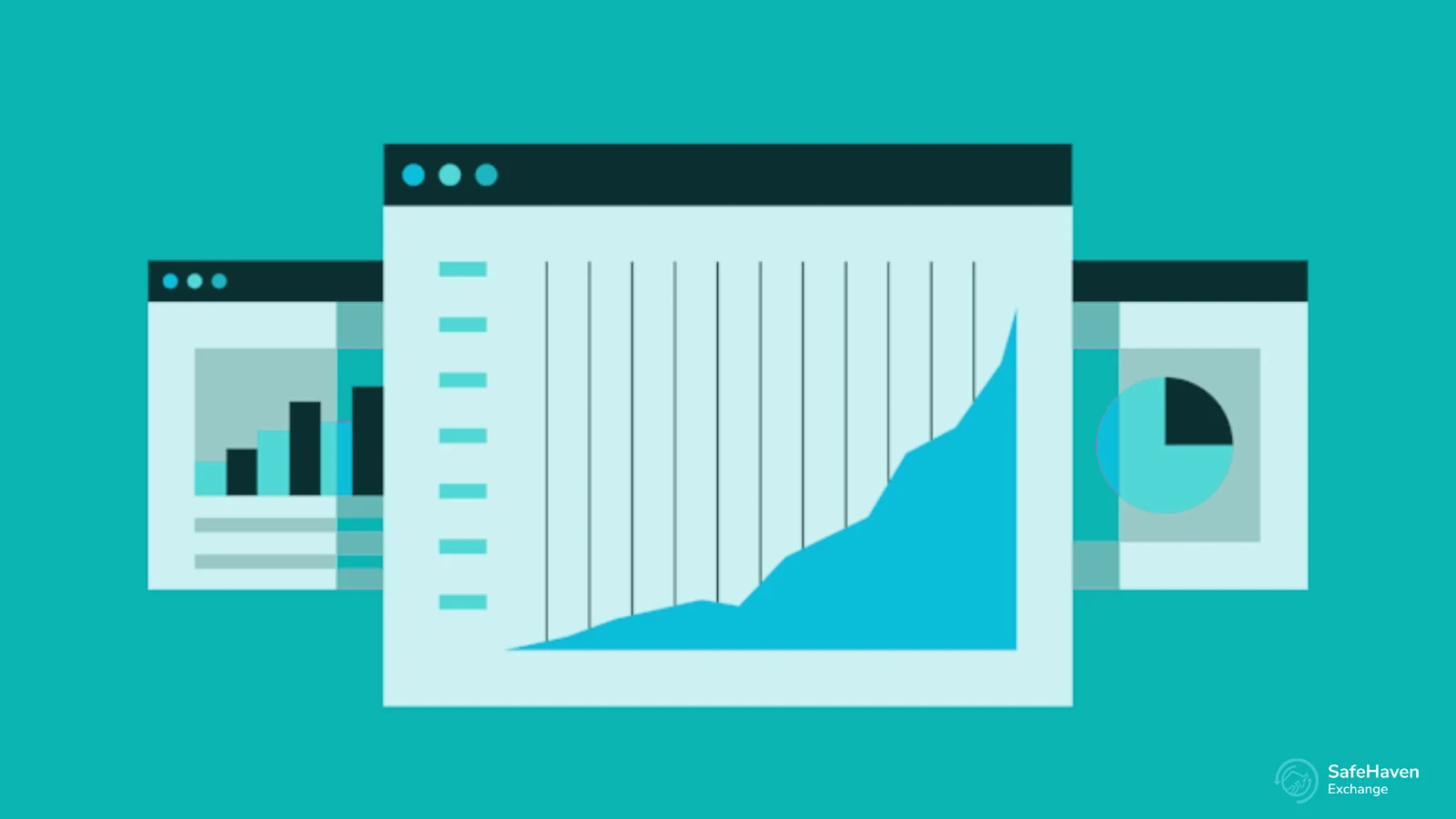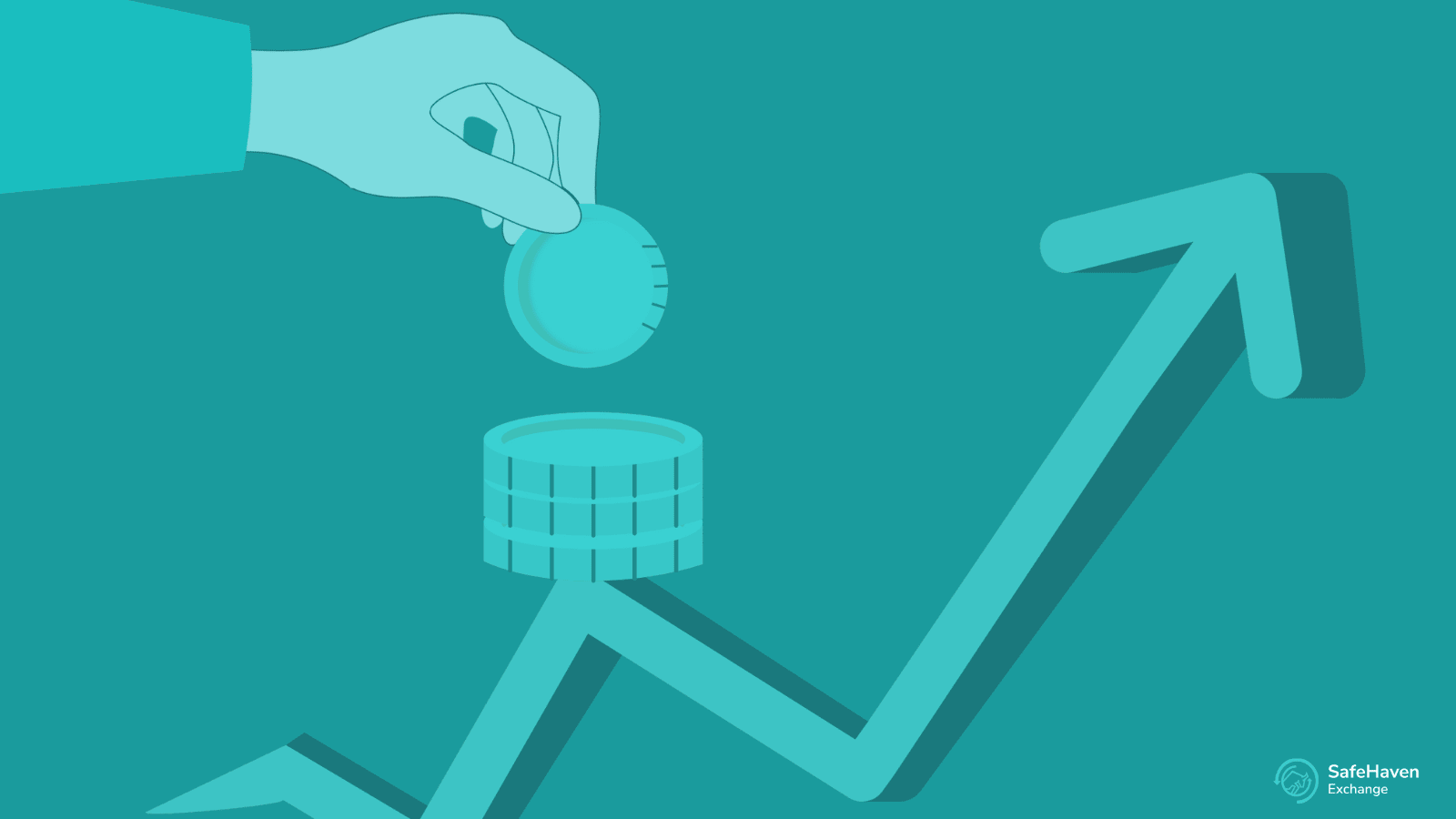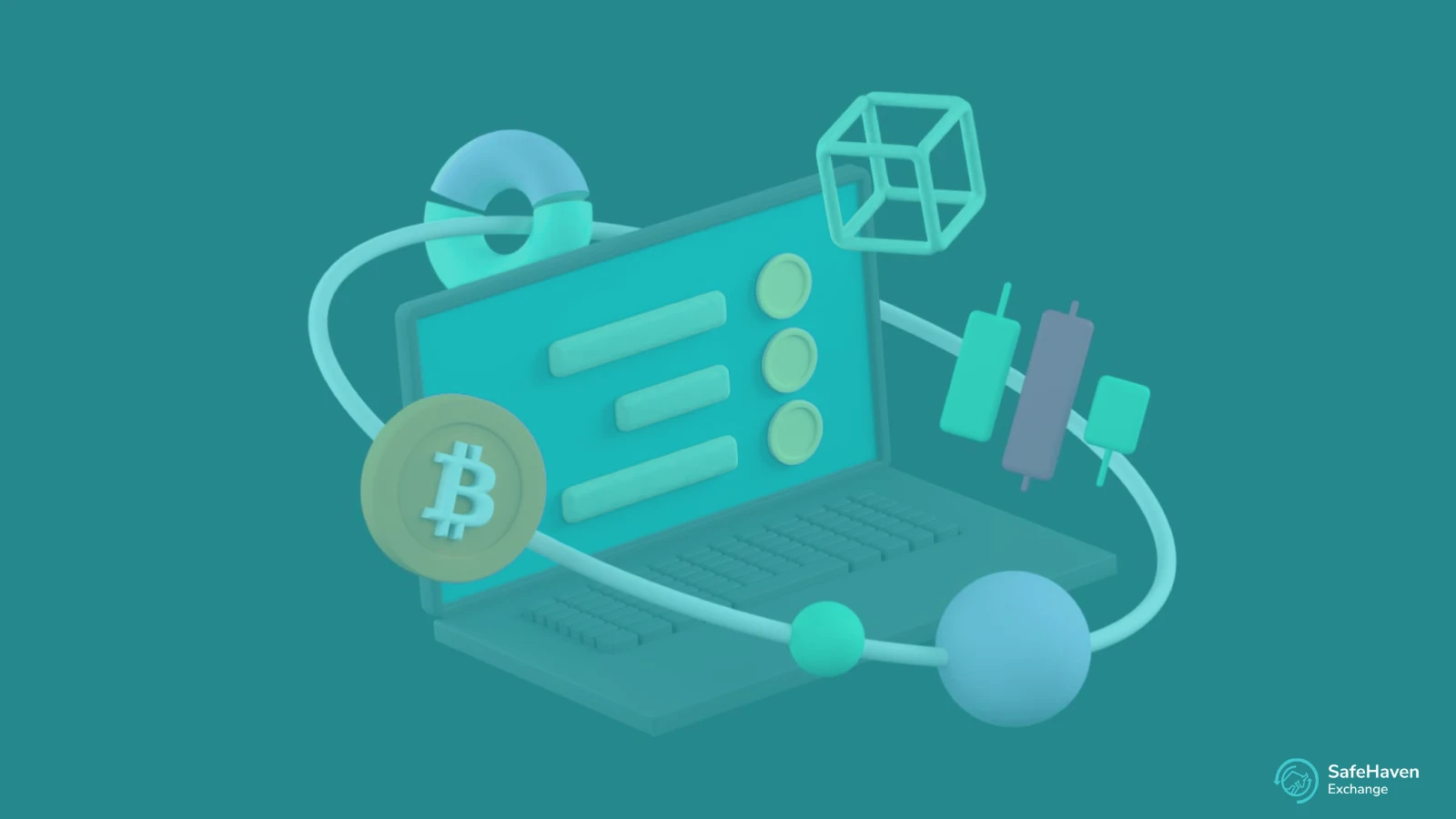In the fast-paced world of financial markets, every trader seeks the perfect balance between profit potential, risk control, and time commitment. Among the most practiced and debated strategies are scalp trading vs swing trading — two distinct approaches that differ greatly in execution, psychology, and profitability.
While both can be profitable when mastered, each caters to different trader profiles and market conditions. In this guide, we’ll break down the core principles, advantages, and risks of both strategies — helping you decide which fits your goals, personality, and preferred trading style.
What Is Swing Trading?
Swing trading is a medium-term trading approach that aims to capture price “swings” or short-term trends over several days or weeks. Swing traders typically enter a position based on technical indicators, market sentiment, and trend confirmation — and exit once the momentum fades.
They rely heavily on tools such as:
- Moving averages (MA)
- Fibonacci retracements
- Relative Strength Index (RSI)
- Chart patterns and candlestick analysis
Swing traders focus on larger price movements rather than intraday volatility. Because trades are held overnight or for several days, swing trading exposes traders to overnight risks (such as news events or gap openings), but also offers the potential for higher returns per trade.
Key traits of a swing trader:
- Prefers analytical decision-making
- Comfortable with moderate volatility
- Holds positions for days to weeks
- Prioritizes trend direction and confirmation
What Is Scalp Trading?
Scalp trading, often called “scalping,” is a high-frequency, short-term strategy focused on capitalizing on small price fluctuations that occur within seconds or minutes. Scalpers aim to accumulate numerous small profits throughout the day, leveraging speed, precision, and strict discipline.
Scalping typically involves:
- Dozens or even hundreds of trades daily
- Small profit margins (a few pips or ticks per trade)
- Tight stop-loss orders and rapid execution
- Dependence on liquidity and low transaction costs
Because of its intense pace and reliance on fast decision-making, scalp trading demands strong focus, fast reflexes, and advanced charting tools — making it more suited to experienced traders or those with access to high-speed trading platforms.
Key traits of a scalper:
- Thrives in volatile or liquid markets
- Uses minute or tick charts for precision
- Executes rapid entries and exits
- Focuses on consistency over large profits
Scalp Trading vs Swing Trading: A Detailed Comparison
While both strategies aim to profit from price movements, their differences are clear when viewed side-by-side.
| Feature | Scalp Trading | Swing Trading |
|---|---|---|
| Trade Duration | Seconds to minutes | Days to weeks |
| Trade Frequency | Very high | Low to medium |
| Profit Target per Trade | Small (few pips/ticks) | Larger (percentage moves) |
| Stop-Loss Range | Very tight | Wider |
| Risk Level | High due to frequency | Moderate due to overnight exposure |
| Time Commitment | Full-time, constant monitoring | Part-time, periodic analysis |
| Analysis Focus | Short-term price action | Market trends and patterns |
| Suitable Markets | Highly liquid pairs or assets | Trending markets |
Risk Factors in Scalp and Swing Trading
Both strategies carry inherent risks — but the type and intensity of these risks differ.
Scalping Risks:
- High transaction costs can erode profits
- Small mistakes multiply quickly due to frequency
- Emotional fatigue from rapid decision-making
- Requires top-tier internet speed and execution platforms
Swing Trading Risks:
- Exposure to overnight market gaps
- Unexpected news or macro events can reverse trends
- Requires emotional resilience to hold through volatility
- Larger stop-losses may lead to higher potential drawdowns
Both approaches demand robust risk management — using proper position sizing, stop-loss orders, and clear trade plans to safeguard capital.
Which Is More Profitable — Scalp Trading or Swing Trading?
Profitability depends largely on market conditions, trading costs, and trader skill.
- Scalp trading can yield consistent daily profits when markets are highly liquid and volatile. However, it requires tight spreads, low fees, and near-perfect execution.
- Swing trading generally favors trending markets and suits traders who prefer fewer but higher-quality trades.
There is no universally “better” method — successful traders often combine both strategies depending on volatility and opportunity. For example, a trader might scalp during high-volume sessions and switch to swing setups during calmer periods.
Psychological Profile: Are You a Scalper or a Swing Trader?
Trading success isn’t only about skill — it’s also about personality fit.
| Psychological Factor | Scalper | Swing Trader |
|---|---|---|
| Patience Level | Low — seeks immediate results | High — comfortable waiting for setups |
| Stress Tolerance | Must handle fast-paced pressure | Must handle market uncertainty |
| Decision Speed | Instant, reflex-based | Analytical and methodical |
| Focus Duration | Constant attention required | Intermittent market checks |
| Preferred Tools | High-speed terminals, Level II data | Trend indicators, moving averages |
If you enjoy fast decision-making, constant action, and precision timing, scalping may fit your style.
If you prefer strategic analysis, patience, and riding trends, swing trading might be your best choice.
How to Choose Between Scalp Trading and Swing Trading
Choosing your strategy depends on three core factors:
- Time Availability – Can you monitor charts constantly or only a few times a day?
- Capital and Transaction Costs – Do your fees allow for frequent trades?
- Emotional Discipline – Can you handle rapid fluctuations or prefer slow, calculated setups?
Start by testing both methods on a demo account before committing real capital. This allows you to discover your comfort zone, preferred pace, and profitability pattern.
Final Thoughts
The scalp trading vs swing trading debate isn’t about which strategy is superior — it’s about which aligns with your goals, time, and temperament.
- Scalping rewards speed, focus, and technical precision.
- Swing trading rewards patience, analysis, and trend discipline.
Both strategies can generate consistent profits when executed on a secure, fast, and low-fee trading platform.
👉 Start trading smarter today on our advanced crypto trading platform — built for speed, security, and real-time execution.
Experience seamless trading whether you scalp or swing — because success begins with the right tools.








